Indulge in luxury at the Waldorf Astoria Washington DC, once the historic Old Post Office Building. Immerse yourself in its storied past and enjoy its modern amenities.
Spawned in the Civil War era, the neighborhood just east of the White House gained notoriety as “Murder Bay.” Lined with “bawdy houses” and saloons, this perilous zone, muddied by the nearby Washington City Canal and avoided by the police, saw many bodies dumped in the canal or ash heaps. Eradication of the blight included plans for a grand postal building that would help give D.C. visibility as a world capital on par with London and Paris. Constructed between 1892 and 1899, the Old Post Office Building became a landmark for the ages.
Inspired by famed architect H.H. Richardson’s design for the Allegheny County Court House in Pittsburgh, the vast steel-frame, granite-sheathed Romanesque Revival building stood nine stories tall and covered an entire city block. Rising 315 feet, the central clock tower today is the third-tallest structure in DC behind the 555-foot-tall Washington Monument and 329-foot-tall Basilica of the National Shrine of the Immaculate Conception.
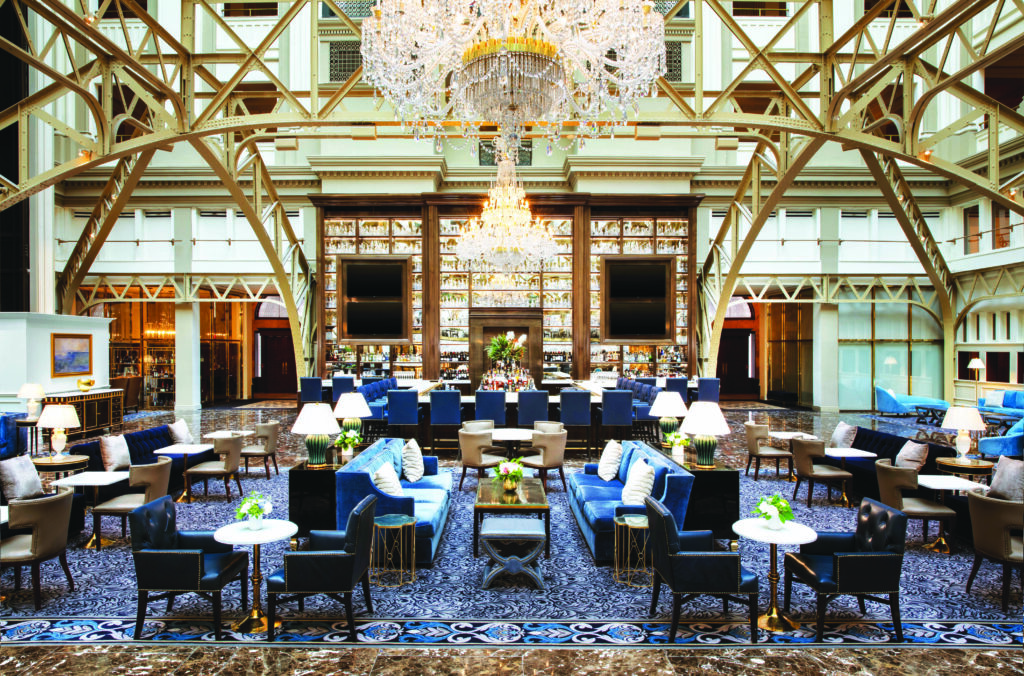
Waldorf Astoria Washington DC Lobby (Photo courtesy of Hilton)
The building served as DC’s Main Post Office and headquarters for the U.S. Post Office Department until 1914, when the former relocated near Union Station. The latter remained in operation until 1934 before moving one block west. In the ensuing decades, the building housed various government agencies. Seen as a “white elephant” that hampered development of the Federal Triangle, it was threatened with demolition in 1928 and again in 1964.
Led by Nancy Hanks, the “gently persuasive” chairperson of the National Endowment for the Arts (NEA), a citizen brigade banded together to save the building. Efforts included a 1971 protest march organized by Don’t Tear It Down, now the DC Preservation League.
Like Jacqueline Kennedy Onassis, who helped save Grand Central Terminal in NYC, Hanks was instrumental in sav- ing the Old Post Office, which was listed on the National Register of Historic Places in 1973.
“Old buildings are like old friends,” said Hanks in her impassioned testimony before Congress. “They reassure people in times of rapid change. They encourage people to dream about their cities, to think before they build, to consider alternatives before they tear down.”
Hanks, who passed away in 1977, was honored in 1983 with the building’s renaming as the Nancy Hanks Center, which served as the NEA’s home until 2014. In 2022, the landmark embarked on a new chapter as Waldorf Astoria Washington DC (1100 Pennsylvania Avenue. Tel: 202-695-1100. hilton.com).
Remembering well the 1980’s when the nine-story central atrium was an inglorious food court and retail space, I was swept away upon arrival and check-in. Returned to glory, the architecture, from the Romanesque arches framing the principal entrances to the Byzantine, French Gothic and French Renaissance detailing and ornamentation throughout, is monumentally breathtaking.
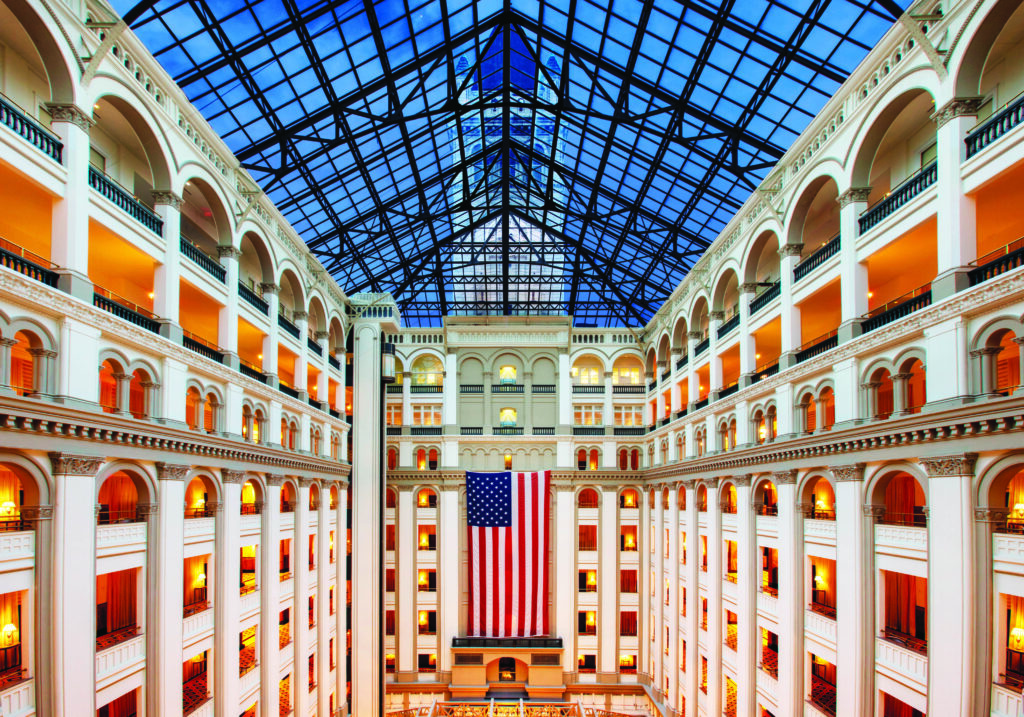
Waldorf Astoria Washington DC Atrium (Photo courtesy of Hilton)
The soaring central atrium is radiant with sunlight from the glass skylight above. Historic homages include the seven-story American flag, which postal employees, starting in 1908, once serenaded by singing the “Star Spangled Banner” from the atrium’s second-floor balcony.
Escorted by a bellman, I rode the vintage elevator to my ninth-floor accommodation, Room 923, otherwise known as the Nancy Hanks Suite. Knowing of her legacy made encountering the palatial splendor of 1,645-square-foot, one-bedroom oasis even more dizzying.
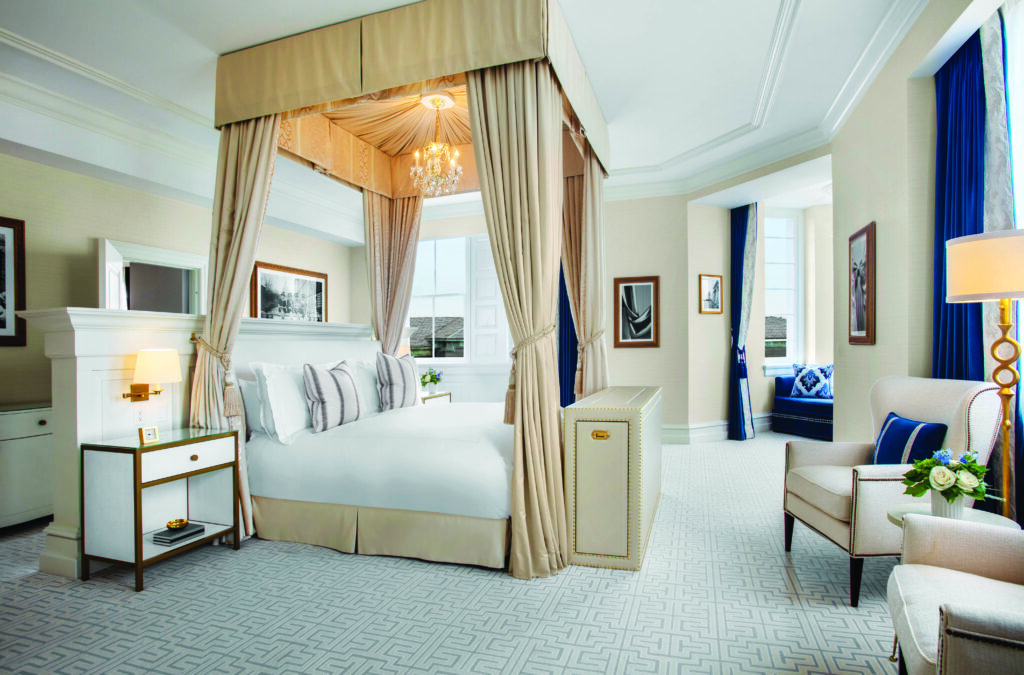
Nancy Hanks Suite Bedroom (Photo courtesy of Hilton)
Every inch a privilege and a gift, my key unlocked the grandeur of an elegantly furnished living room and king bedroom with giant canopied four-poster nest. Plus, an executive desk in one turreted nook and sofa seating in the another, the spacious marbled bathroom with deep soaking tub and glass-enclosed shower, and range of exclusive amenities.
Amid the sun-drenched splendor of it all, with black and white photos of yester- year DC and Washingtonians on the walls and the awareness of what Ms. Hanks had saved, the suite imparts a powerful sense of connection to emotion, place, and history.
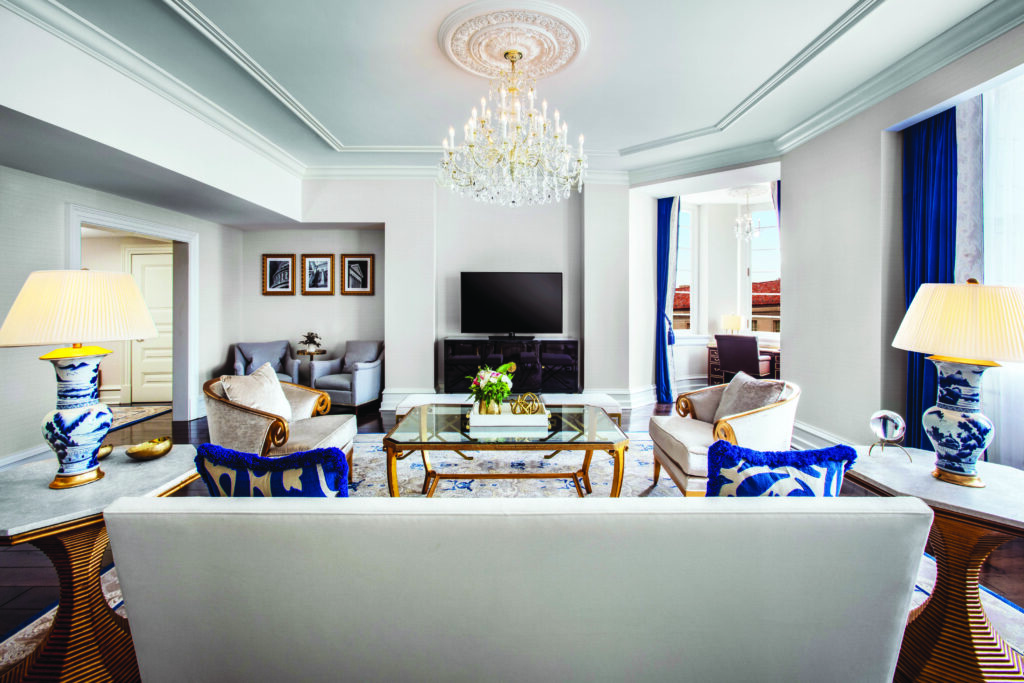
Nancy Hanks Suite Living Room (Photo courtesy of Hilton)
With that breathlessness under control, I delved into the other corners of this 263- room castle, including the clock tower’s observation deck. Accessed from a separate outdoor entrance around the block, the free-admission experience (with a security check) starts with a historical exhibit on the building and DC. From there, a glass elevator inside the atrium rises to the four-sided viewing platform attended by National Park Service rangers. While the openings are screened-in, the panoramic views, from 270 feet, are among the best in town.
Since 1983, when a six-year renovation on the dilapidated building was completed, the clock tower has housed the Bells of Congress. Gifted to Congress by the U.K. based Ditchley Foundation as a Bicentennial gift of friendship in 1976, the ten English-style change ringing bells, replicating and cast in the same foundry as those in London’s Westminster Abbey, peal every Thursday evening for practice and on federal holidays and other special occasions.
Arrayed with seating, the expansive atrium floor is home to the all-day Peacock Alley bar and lounge and elevated dining at The Bazaar By José Andrés, one of six Bazaar-flagged concepts around the U.S. from the acclaimed Spanish-American chef- humanitarian.
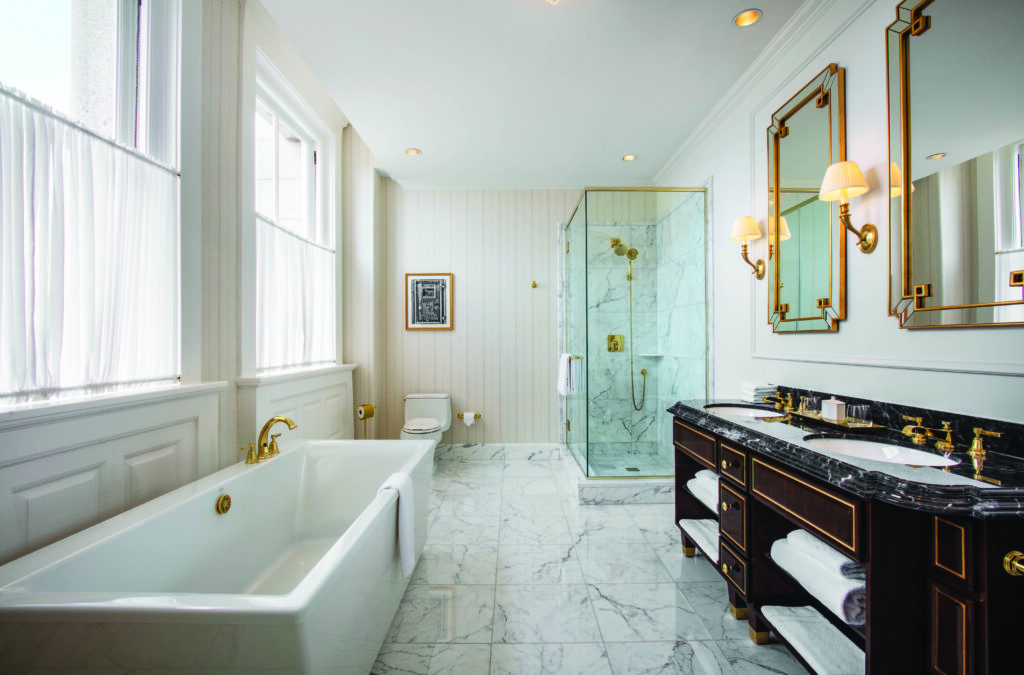
Nancy Hanks Suite (Photo courtesy of Hilton)
Headquartered in DC, Andrés has been a major force in reshaping the city’s culinary scene since 1993. His bi-level avant-garde restaurant is for signatures such as the wondrous liquified olives, crafted during his time working alongside molecular gastronomy guru Ferran Adria at Spain’s iconic El Bulli. Plus, riffs “with an Americana flair and nod to U.S. history” such as the Beef Cheeks Eisenhower Stew, Philly Cheesesteak with Wagyu beef, and José’s Favorite Waldorf, Salad.
Featuring six treatment rooms, a Himalayan Salt Therapy Room and The Sanctuary, a relaxation area with private resting cocoons, the Spa was tempting, but the call of Room 923, one of my luckiest hotel numbers ever, was irresistible. Normally, I spend little time in hotel rooms when traveling, but here, before leaving, the two hours I spent in the cocoon of the tall corner nook, gazing at the dance of the sunlight on the walls, were a DC dream.


